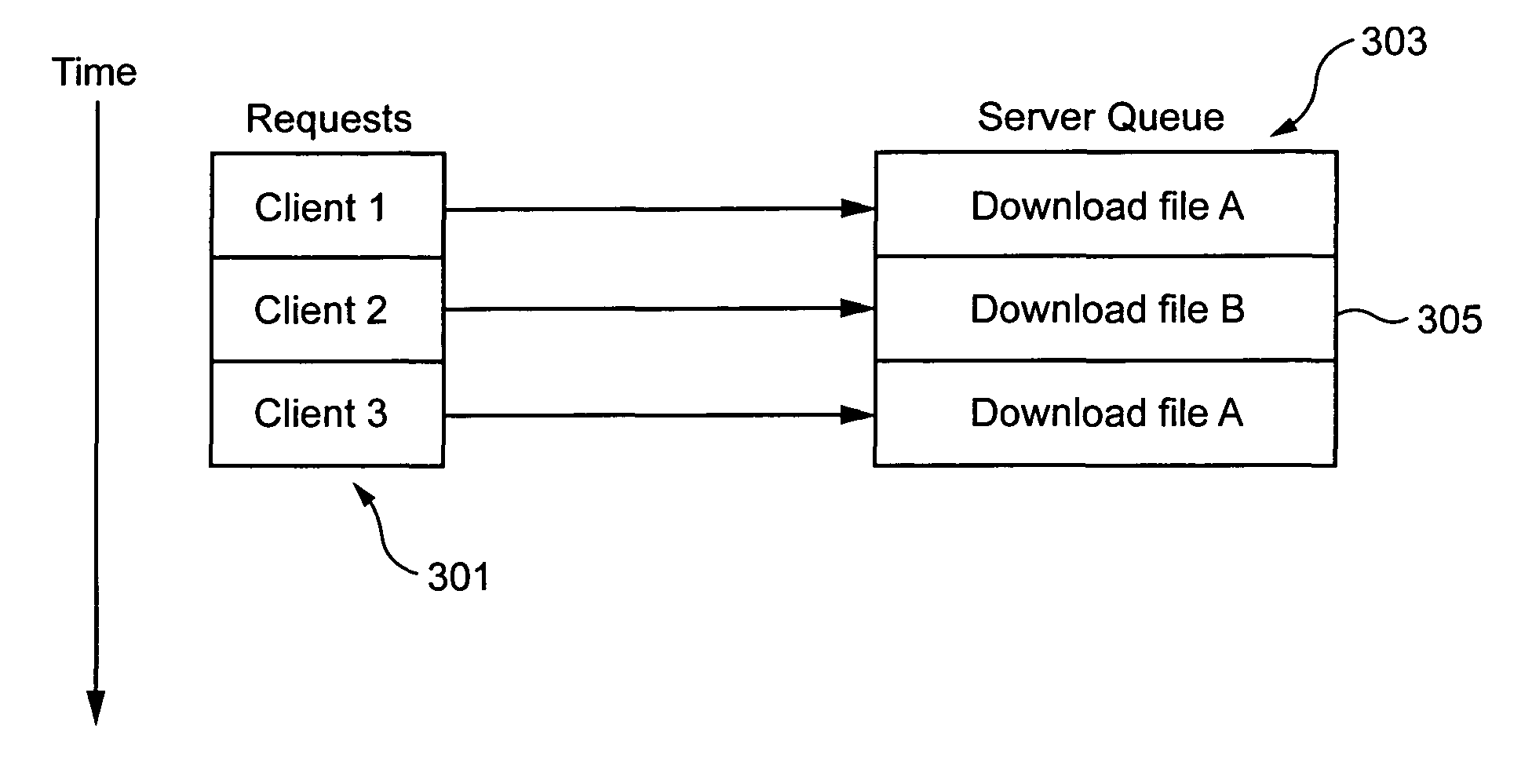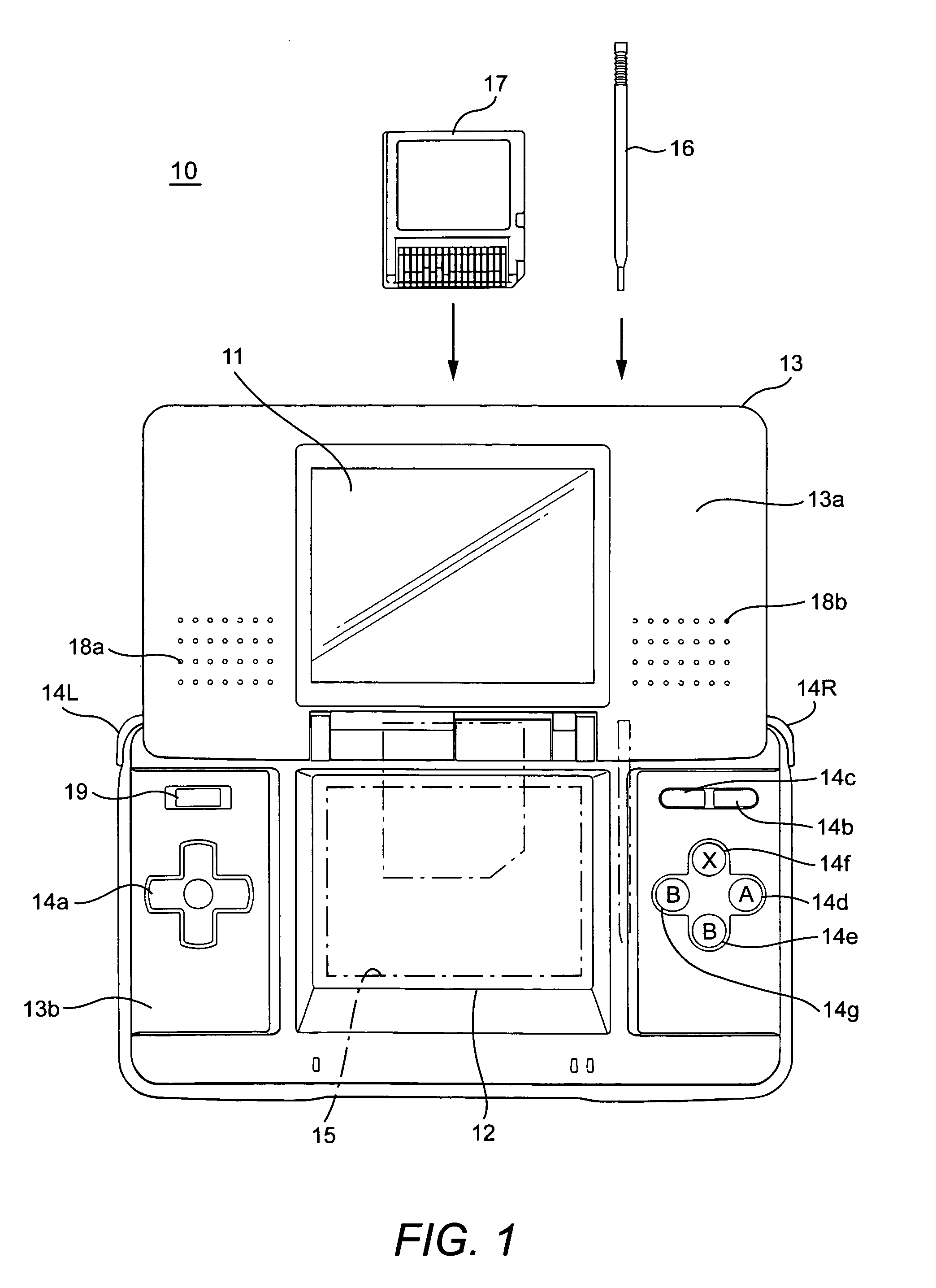Method and apparatus for distributing data to a plurality of game devices
a game device and data technology, applied in the field of system and/or method for distributing data to client devices, can solve the problems of difficulty in a group of players sharing a common environment, difficulty in a group of players meeting in someone's living room, and limitations on the number of players that can play the game, so as to eliminate the bottleneck associated with multiple file requests and shorten the time. the effect of tim
- Summary
- Abstract
- Description
- Claims
- Application Information
AI Technical Summary
Benefits of technology
Problems solved by technology
Method used
Image
Examples
Embodiment Construction
[0032]Referring now more particularly to the drawings, FIG. 1 is an external view of a game device included in the wireless network system shown in FIG. 3. In FIG. 1, a game device includes a first liquid crystal display (LCD) 11 and a second LCD 12. A housing 13 comprises an upper housing 13a and a lower housing 13b. The first LCD 11 is disposed in the upper housing 13a, and the second LCD 12 is disposed in the lower housing 13b. Each of the first and second LCDs 11 and 12 has a resolution of 256 dots×192 dots. Although the present illustrative game device shows an example where LCDs are used as display devices, any other display devices, such as display devices using, for example, electroluminescence (EL) technology, can be used. Also, display devices of any level of resolution can be used.
[0033]The upper housing 13a has formed therein sound holes 18a and 18b for emitting sound from a pair of loudspeakers (30a and 30b in FIG. 2, which will be described below). The lower housing 13...
PUM
 Login to View More
Login to View More Abstract
Description
Claims
Application Information
 Login to View More
Login to View More - R&D
- Intellectual Property
- Life Sciences
- Materials
- Tech Scout
- Unparalleled Data Quality
- Higher Quality Content
- 60% Fewer Hallucinations
Browse by: Latest US Patents, China's latest patents, Technical Efficacy Thesaurus, Application Domain, Technology Topic, Popular Technical Reports.
© 2025 PatSnap. All rights reserved.Legal|Privacy policy|Modern Slavery Act Transparency Statement|Sitemap|About US| Contact US: help@patsnap.com



